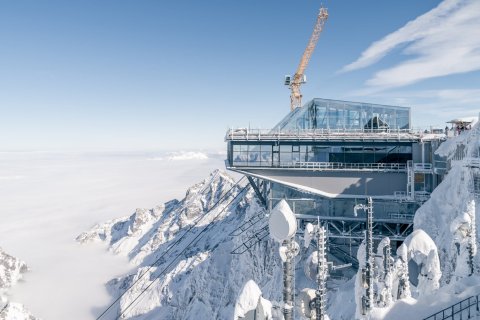At South Ural State University, the researchers found the way to increase the service life and strength of concrete. Scientists' research can advance construction in the Arctic, Siberia, and the Far East ― areas with harsh climate conditions that require ultra-durable concrete. It was possible to obtain a material with such properties due to a change in the structure of the hydrated phases of cement stone. An article on this study is published in the journal Case Studies in Construction Materials (part of the Scopus database).
Durability of reinforced concrete products
Concrete and reinforced concrete have been used in construction since the mid-19th century, and specialists regularly improve the properties of these materials. They are reliable, safe for humans and have an almost unlimited raw material base.
At the same time, experts note a significant drawback of reinforced concrete structures: they are short-lived in harsh climatic conditions. Concrete that wraps the reinforcement breaks during cyclic freezing. This is due to the formation of ice in the pores of the building material. The cause is also mechanical stress due to temperature changes, leaching of the portlandite or aging of the cement gel.
Scientists all over the world are working to increase the durability of reinforced concrete structures. SUSU researchers are also interested in this problem. A study of the durability of concrete at the Department of Building Materials and Products of the Institute of Architecture and Construction has been conducted since the 1990s, and in 2018, the master's project was launched.
A new study, for the first time, shows the need to take into account the stability of the hydrated phases of cement stone during cyclic freezing and thawing.
“While ensuring the stability of the hydrated phases of cement stone, the mechanical properties of concrete, and, consequently, its durability, remain unchanged. We proposed to evaluate durability in temporary indicators of service life depending on the operating conditions of reinforced concrete structures and the modifiers used,” the senior lecturer at SUSU Kirill Shuldyakov said.
Low temperature test
The study was conducted in the laboratory of SUSU at a temperature of -50 ° C in 5% sodium chloride solution. It should be noted that foreign colleagues were surprised by this approach, since they have the most severe test conditions minus 20 degrees. However, these are the conditions recreated in the laboratory of SUSU that correspond to the national standard and allow us to create a material that can withstand operational impacts, the climate tests of the Arctic, Siberia and the Far East.
.jpg) Image: Relative deformations of a Image: Relative deformations of a concrete sample saturated and frozen in a 5% sodium chloride solution.
Image: Relative deformations of a Image: Relative deformations of a concrete sample saturated and frozen in a 5% sodium chloride solution.
Highly durable concrete with a water/cement ratio of less than 0.35 was subjected to cyclic freezing and thawing. The stability of the material structure was evaluated both before cyclic impacts and after a different number of them. As a result, scientists concluded that the frost resistance grade of concrete can change 4–5 times with a constant water-cement ratio, but with the introduction of various modifiers that affect the composition of hydrated phases. A stable hydrosilicate gel was formed when the amount of portlandite in the cement stone was not more than 5%. This was ensured by the introduction of optimal dosages of modern modifying additives.
“The mechanism of cement gel crystallization is associated with an increase in its basicity upon absorption of lime by the initially formed calcium hydrosilicates. The introduction of pozzolana (a mineral additive that enhances the strength and durability of concrete) reduces the concentration of lime, causes the active polymerization of silicon-oxygen tetrahedra, especially during cyclic freezing, which contributes to the formation of stable colloidal dispersed calcium hydrosilicates,” Kirill Shuldyakov explained.
The research of SUSU scientists can help in the construction of structures in harsh conditions, for example, the Power of Siberia gas pipeline, and in the development of the Arctic region.
.jpg)
Photo: Kirill Shuldyakov, Senior Lecturer, Department of Building Materials and Products, Institute of Architecture and Civil Engineering, SUSU
But scientists do not intend to stop in their work. The next step is the study of diffusion permeability of concrete. According to the standard GOST 31384-2017, this characteristic determines the service life of reinforced concrete structures.
Research in the field of materials science is one of the three strategic directions for the development of scientific and educational activities of the South Ural State University along with IT and the environment.
SUSU is a participant in the 5–100 Project, intended to increase the competitiveness of Russian universities among the world's leading research and educational centers.




